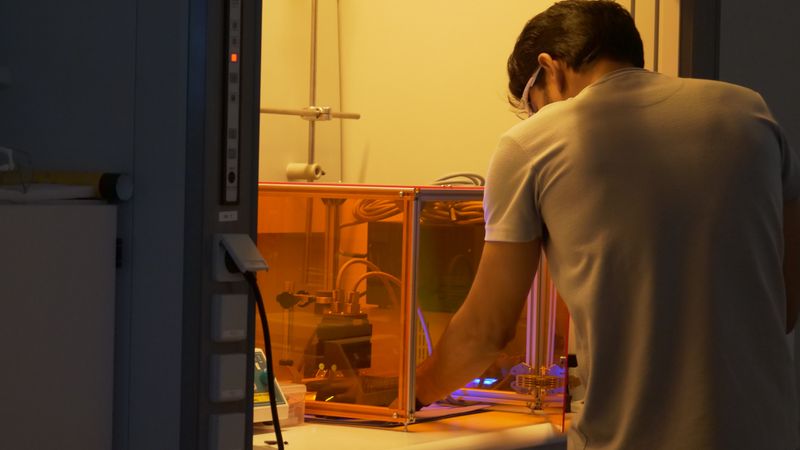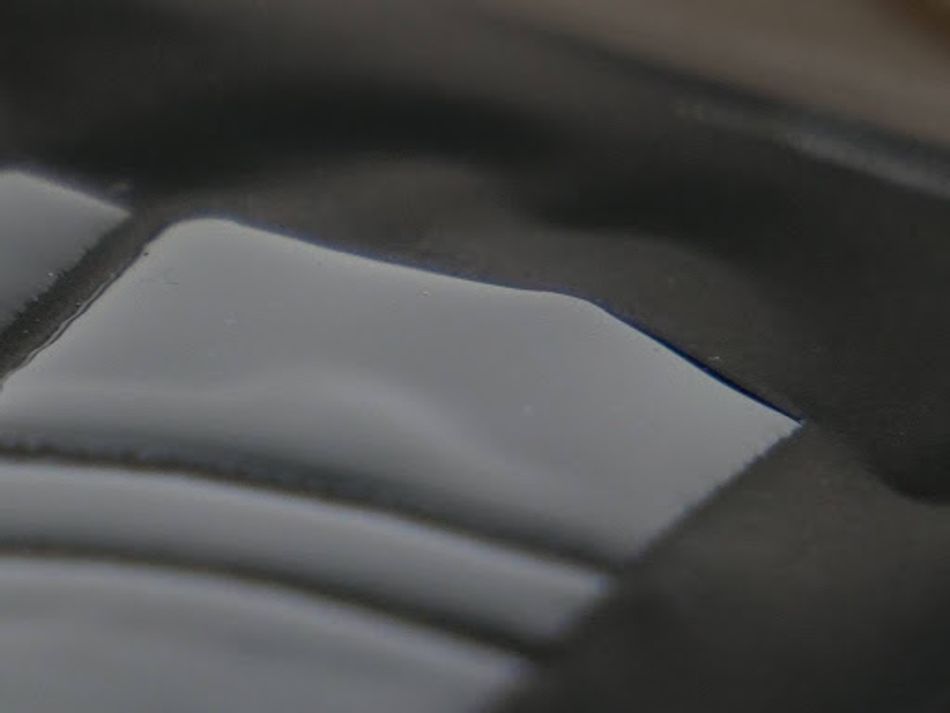Quantica Breaks Through Inkjet's Viscosity Ceiling to Deliver Multi-Material Printing of Novel Materials
Inkjet printing innovator Quantica has developed a printhead that can print previously un-jettable materials. The technology has implications for the printing of adhesives, coatings, and functional materials.
Additive manufacturing and material deposition with inkjet is a rapidly expanding field in which inkjet printheads are used to selectively deposit materials onto substrates. While certain versions of inkjet technology are already being used to deposit low-viscosity inks, new developments are moving the goalposts of what is possible.
Thanks to precise droplet control, inkjet technologies are known for their ability to produce fine details and precise coverage quickly and consistently. However, they are limited by their dependence on low-viscosity materials. Thicker fluids — many of which have desirable properties — are difficult to move through tiny channels, descender passages, and nozzles, regardless of the inkjet technology. To date, even the most advanced inkjet printheads have not been able to deposit materials with a viscosity greater than 100 mPa·s (millipascal seconds).
Viscosity limitations in inkjet technology have historically seen manufacturers turn to alternative methods like screen printing, flexography, and lithography. But while these technologies can handle high-viscosity inks and fluids, they have shortcomings like material waste, high pressure on substrates, and a high cost of job preparation. In response to this dilemma, inkjet trailblazer Quantica has developed a game-changing solution for the inkjet printing of high-viscosity materials, exploiting the key advantages of inkjet while overcoming its biggest limitation.
Quantica’s Unique Technology: The NovoJet™ Printhead
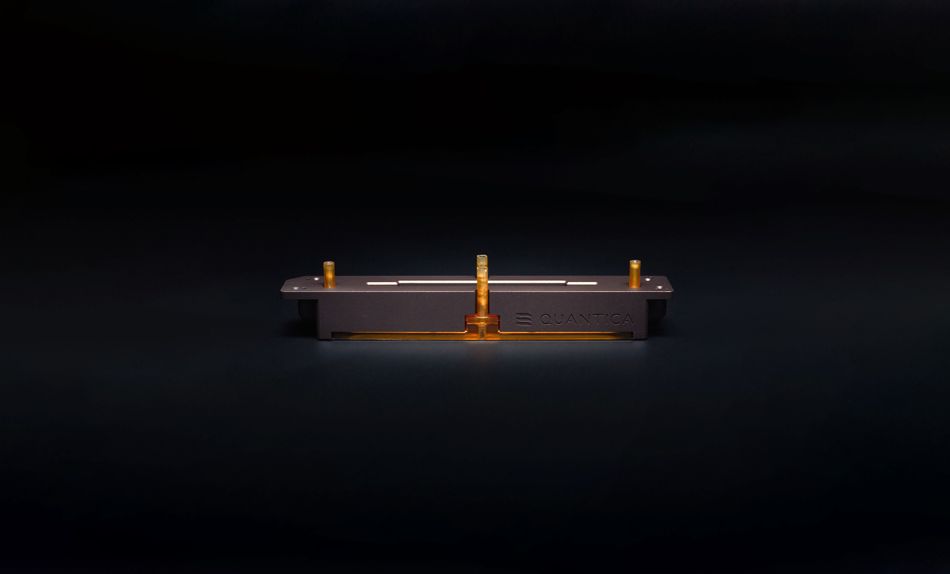
This unprecedented jetting power comes from a unique actuator design and material recirculation. The novel actuator design produces displacement 100x greater than in a conventional piezo printhead, enabling productive deposition of high-viscosity materials at high frequencies. Meanwhile, high-flow recirculation prevents particle settling, even when dispensing inks and fluids with particle sizes up to 5 µm. This smart printhead design has enabled inkjet deposition of materials with a viscosity of up to 250 mPa·s at jetting temperature and, in one successful trial, a material showing 13,000 mPa·s at room temperature (made possible by a drastically drop in viscosity of such fluid when heated by the printhead). That means the technology can process previously un-jettable materials such as adhesives from Henkel LOCTITE®, paints with very high pigment loading, and industrial coatings.
In every respect, the Quantica NovoJet™ printhead is a top-of-the-line inkjet printhead capable of precise droplet control. Following on from a production partnership agreement signed in 2023, pre-production of the devices has started at Xaar, leveraging the British company’s state-of-the-art facilities and printhead production knowledge.
The NovoJet™ Printhead at a glance:
Nozzle count: 96
Nozzle pitch: 1.27 mm
Frequency: 8kHz
Max viscosity (jetting temp): 250 mPa·s
Max room temp viscosity of a jetted material: 13,000 mPa·s
Operating temperature: 25–80°C
Adaptable, Modular, Integrated Technology
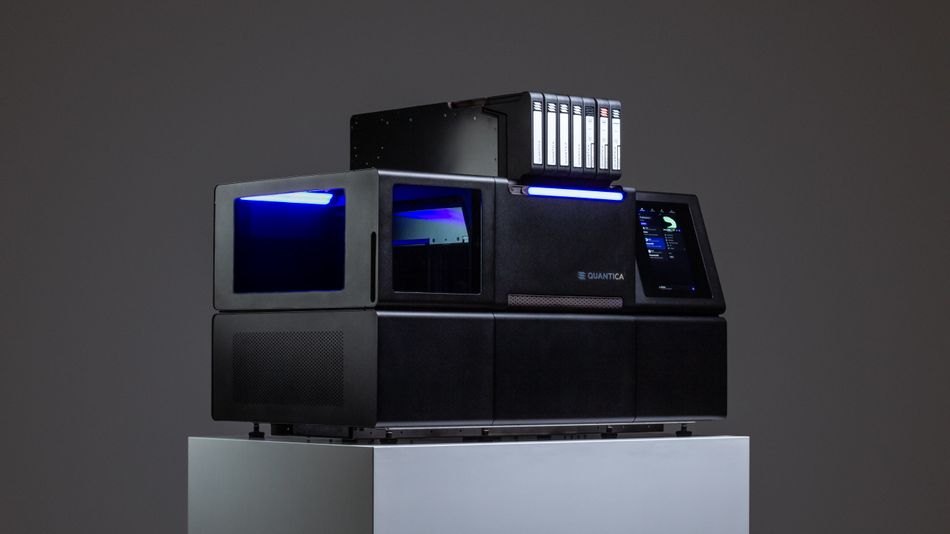
While the NovoJet™ Printhead forms the basis of all Quantica technology, the company offers a range of products and services that enable customers and partners to go from initial dropwatching and process development all the way to manufacturing integration. Soon, the NovoJet™ Printhead will be deployed in three different systems, each of which serves a distinct purpose on a customer’s journey from material selection to at-scale manufacturing.
Since most customers will never before have had the ability to jet materials with a viscosity of up to 250 mPa·s, Quantica is also offering comprehensive application development services, working with partners to carry out material qualification, jetting trials, and printing trials. This effectively allows companies to fast-forward through independent validation and experimentation, using Quantica’s expertise with its systems to develop a reliable process for the relevant materials.
NovoJet™ JetPack
The JetPack, which has already begun shipping to customers, is a material testing and development tool that enables users to validate materials for use with the NovoJet™ Printhead and its associated hardware. Designed to work with dropwatching systems like ImageXpert’s JetXpert, the JetPack allows for close analysis of jetting and droplet behavior.
NovoJet™ OPEN Printer
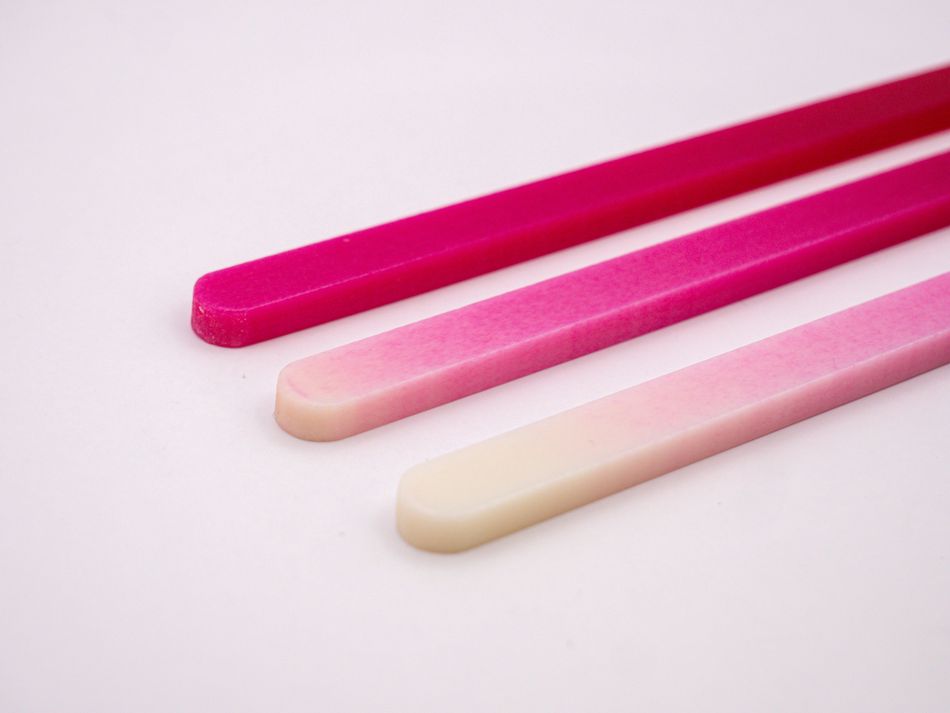
Once customers have validated their materials, they can proceed to application development, multi-material experimentation, and low-volume production with the NovoJet™ OPEN Printer, a benchtop printer that can hold up to seven active printheads. The open system allows for intuitive adjustment of jetting and printing parameters.
Print Engine
The NovoJet™ Printhead can be integrated directly into production lines using the Quantica Print Engine— currently in development with expected trials in 2025 —. These printhead equipped units can form part of an integrated, all-in-one system or an inline unit that can be added to an existing production line, allowing manufacturers to replace inefficient processes like screen printing.
Material Development Possibilities
Quantica has developed a technology for the inkjet printing of high-viscosity materials. However, it’s up to customers to decide which specific materials they wish to validate and print. Such materials may deliver desirable properties such as durability, conductivity, biocompatibility, or UV resistance.
Customers seeking to independently develop and validate materials for inkjet printing via the NovoJet™ Printhead can use the Jetpack material testing tool to try out material configurations, adjusting jetting parameters to optimize fluid behavior and compatibility. Alternatively (or additionally), customers can outsource their material qualification and application development to Quantica, leveraging the company’s expertise in conducting jetting and printing trials. Quantica is currently partnered with Fraunhofer IPA in this area, with further qualification and application development partnerships set to be announced later this year.
The Transformative Potential of High-Viscosity Inkjet Printing

Thanks to the wide range of materials that can be successfully jetted using Quantica hardware, some potential applications include:
Paints with higher pigment loading
Industrial coatings
Adhesive and various epoxies
Insulating and encapsulating layers
Packaging and labeling coatings
PCBs and semiconductors using conductive composites
Printed electronics
Digital displays
Translucent or optical materials
Biomedical devices - including multi-material dentures
The design freedom, non-contact nature, and speed of inkjet printing compared to traditional methods — in addition to its fully digital operation that allows for rapid iteration and refinement — will have a significant impact on productivity, potentially transforming mass production of parts like PCBs and fuel cells.
Conclusion
Introducing high-viscosity printing capabilities radically transforms the nature of inkjet printing. With users of the technology now able to discover and experiment with previously un-jettable materials, inkjet is becoming a genuine manufacturing technology as much as a printing technology, taking its purview beyond text and image printing to the fabrication of functional, multi-material, multi-layer components.
Arrange a call with Quantica to see how NovoJet™ can change your business.
References
1. Castrejon-Pita JR, Baxter WR, Morgan J, Temple S, Martin GD, Hutchings IM. Future, opportunities and challenges of inkjet technologies. Atomization and sprays. 2013;23(6).

